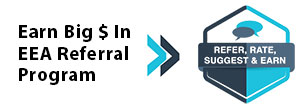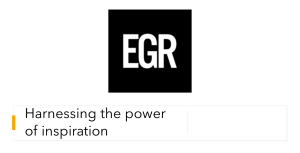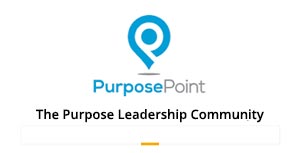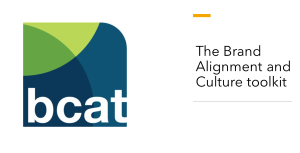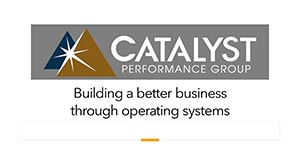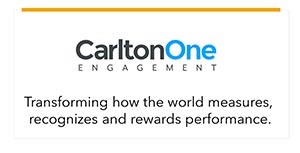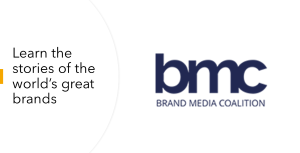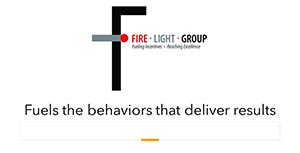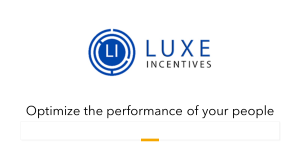In their new book, “Inbound Organization,” authors Todd Hockenberry and Dan Tyre, among the earliest leaders in the Inbound and Content Marketing movement, focus on the importance of engaging the entire organization, principles that will resonate with ESM readers and Enterprise Engagement Alliance members.
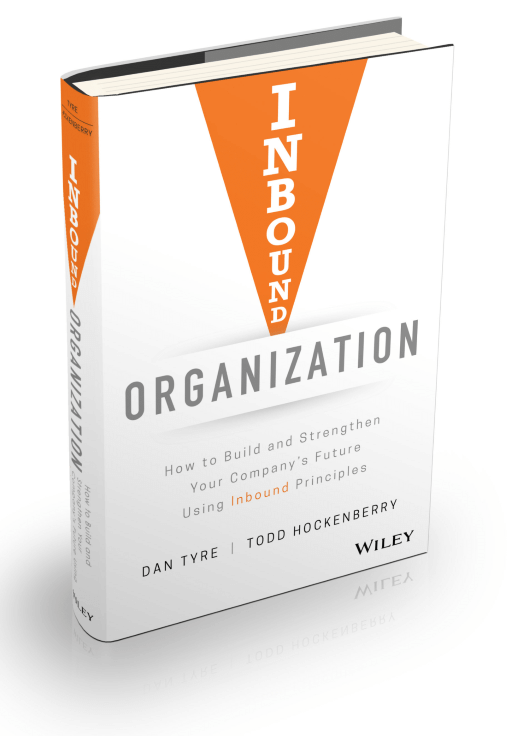
The concept of Inbound Marketing first became popular in 2006, when Brian Halligan and Dharmesh Shah founded Hubspot, which has grown into one of the world’s leading inbound and content marketing platforms. According to Wikipedia, “Inbound marketing provides information, an improved customer experience and builds trust by offering potential customers information they value via company-sponsored newsletters, blogs and entries on social platforms.” The concept, reportedly based on the notion of “permission marketing” developed in the 1990s by consultant Seth Godin, is focused on enabling marketers “to earn their way into a customer’s awareness rather than invading their awareness through paid advertising.” To learn more about Inbound Marketing, go to
Academy.hubspot.com for an online learning and certification program.
We recently contacted the authors of Inbound Organization, Todd Hockenberry and Dan Tyre, who assert that to succeed at Inbound Marketing, a company has to have an “Inbound Culture.”
ESM: What would you say are the key takeaways from the book—what message did you feel was essential to get across and to whom?
Hockenberry and Tyre: The world has changed and lots of business owners have missed it. Everyone wants to grow, but no one wants to change. We want to make sure everyone understands the high stakes involved in optimizing your company to take advantage of the inbound revolution.
Inbound Organization is for anyone struggling to make sense of the new buyer behavior and needs to figure out how to build a team capable of delivering the experience those buyers demand. Business owners with large and small companies, entrepreneurs, startups, business leaders, managers, HubSpot partner agencies, marketing teams, salespeople…anyone with a need to grow today and into the future is the audience for our book.
The key takeaways are that growing today and in the future will start with a mindset change, one where leaders must put their customers and their employees first and help them. Leaders must create a mission and vision, build a culture that is reflective of the goals and aspirations of both employees and customers, and then give them an operating system within which to do their best work. Inbound is a thing not because someone came up with a methodology, but because buyers changed the way they want to learn, research and find solutions to problems, which in turn changed the way people buy and sell. Inbound marketing was a reaction to the changing buyer and digital connectivity.
Inbound is at its heart two things: being helpful first and attracting versus interrupting. Everything else flows from those two principles. Our book is about how leaders take these core beliefs and drive them through the entire organization, so businesses are built for and solve for the customer at every step along the buying journey. It is now as much about who you are as it is what you sell that determines who grows and who stagnates. And buyers today are “inbound” so you must be inbound if you want to reach them.
ESM: What was the “Aha”moment when you realized companies were missing the connection between the internal and external audiences?
Hockenberry and Tyre: We wrote the book because Dan and I both understood that Inbound was much more than a marketing methodology and had become a set of beliefs and a mindset required for businesses to grow with modern buyers. Dan and I were both speaking to a group of tool-and-die manufacturers at a trade show in Southern California in late 2016. We were having coffee and catching up, and Dan asked me what I was working on. I told him that I was working with business leaders to take the beliefs around Inbound to the entire organization and that just doing Inbound Marketing was no longer enough to grow.
He jumped up and excitedly said “I’m doing a presentation called The Inbound Organization and I’m talking about the same things!” So that was the “Aha “moment when we knew were thinking about the same thing and the moment we decided to write the book telling that story. We both saw a need to help companies understand the new competitive landscape and embrace the Inbound philosophy quickly for their own benefit. After our presentations, people would say “OK, we want to become an Inbound organization, what happens next? That’s why we wrote the book—to help provide the next step.
ESM: What do you think is necessary for companies to implement your concept of the Inbound Organization?
Hockenberry and Tyre: The first step is to understand that the fundamental shift to Inbound has occurred and that organizations need to change to adapt to it. The same old playbooks and processes will not work. The next step becomes building a culture and an operating system that drives the ideas and beliefs of Inbound to everyone in the organization. These beliefs include:
• Helping first
• Solving for the customers
• Transparency
• Strategies based on a target persona
• Engagement all along the buyer journey
• Using content in a strategic way
• Aligning everyone in the organization behind the mission
• Using data to make decisions about marketing and sales
But it all starts with the mindset of the leadership team. You can’t fake it. You must lean into helping with your marketing team, sales team, customer service team. That seems obvious, but also your operations team, legal team, your human resources team. It really is the entire company.
ESM: Who do you think is the final decision maker for this? Who manages this? HR, Marketing, the CEO?
Hockenberry and Tyre: I think that’s an old-school way of thinking about Inbound. There’s no final decision maker. Inbound is a way of doing business, a way of looking at customers and employees and all partners and stakeholders. Leaders must start the process, but every person in every department is responsible, and in fact accountable, to act in an Inbound way and deliver the experience that buyers, employees and partners need and want. It’s also more monitored than command-and-control managed. Everyone must know what the mission, strategy, plays and goals are and be accountable to living up to them.
We’re not saying there’s no management, but the culture and operating system, if built correctly, keep everyone on track and living up to inbound beliefs. Leaders have been saying “customers first” for decades. We are now at the point where we can back it up with data, focus and instant results. For us, it’s the founders, board of directors, senior management team and division heads that are responsible for the vision and execution of the inbound philosophy.
ESM: How much do you think marketers understand about how to use content to identify people in a researching or shopping mode and to build trust—i.e., helping versus selling? In other words, where are marketers in this shift toward an Inbound approach on a scale from 1 to 10, 10 being most advanced?
Hockenberry and Tyre: Marketers are all over the map. It depends on the industry and even, to a degree, on location. Many B2C (business-to-consumer) marketers are well along the process of using content in a helpful and productive way, whereas B2B (business-to-business) tends to be much farther behind, though there are certainly exceptions. The test is to look at the brands you engage with and ask the simple question:Is this content/ad/marketing helpful to me and does it provide what I need/want/expect at this moment, or is it self-serving and focused on the seller?
We would grade marketers an overall 8 of 10, but the last mile is the most critical and hardest. We’re getting to the point where every individual should have a personalized interaction based on multiple factors that give them exactly what they want and need, in their preferred format and in the manner that they prefer to absorb it—think video vs. bullet points, story versus return-on-investment data. Machine learning will accelerate this trend. In 2019, if a website doesn’t know you by name the first time you visit it, you’ll scrunch up your nose like it is broken and think “How come this website doesn’t know who I am?”
ESM: Do you think that the average person in marketing and sales is receiving the necessary training on how to inform and help rather than sell?
Hockenberry and Tyre: No. Again, ask this question of the salespeople you interact with on a daily basis: Are they helping, or are they pitching/selling/closing?
ESM: Being an agency yourself, how do you think this big shift toward informing, helping and building trust rather than selling and promoting will affect the agency business? Do you think it’s possible that with the advent of the Inbound Organization that the traditional agency model will collapse upon itself due to all the waste of “spray and pray.”
Hockenberry and Tyre: Agencies that don’t deliver results and ROI will go away regardless of their approach. I live in the B2B world, and the majority of companies don’t have the internal expertise and experience to deliver great content and share it in a productive way, so they often need outside help to make Inbound happen. I think that will always be the case—technology and buyers will change faster than many B2B companies will be able to react.
Great agencies will understand how to help their clients become more Inbound so the client can then start to do Inbound. Agencies that coach, teach and guide their clients to change their culture and beliefs will be the ones that see the most success. The ones that follow a script or menu approach to services will do a lot of Inbound but lag in terms of results. Marketing agencies are one-dimensional and set up for the way companies did business 20 years ago. “Growth” agencies support both marketing and sales, and they help you grow. Almost everyone wants to grow.
ESM: Do you believe that creating a platform to help organizations become what we call Inbound 360 to be a next frontier for Hubspot, or is this more a focus for Hubspot agencies?
Hockenberry and Tyre: It should be a focus for everyone. If you don’t have a mission, vision, plan and target to execute these days, you’re behind the curve. This is really important. When you’re buying any product, from a phone or a car to a house, copier or clothes, do you want someone to know you, help you and assist you, or do you want someone to push the same agenda all the time? If you’re not practicing Inbound, you could be playing catch up.
ESM: Anything else you wish to tell us about the future of Inbound and Content Marketing and the connection to engagement across the enterprise?
Hockenberry and Tyre: We’re not going back to the days when interruptive marketing and product-focused selling were effective. Helping will be the new table stakes, personalizing interactions and relationships will be the expectation, and organizations lined up with the values and beliefs of their buyers will be the winners.
About the Authors:
Dan Tyre is Sales Director for Hubspot, the leader of the Inbound movement, offering a complete technology and solution platform for agencies that bring content marketing solutions to clients. Tyre joined HubSpot as a member of the original team in May of 2007, and has led the recruiting, training and growth of HubSpot’s sales team ever since.
Todd Hockenberry is Founder of Top Line Results, a nine-year-old Inbound agency focused on delivering growth strategies and tools to technology and capital equipment companies through more effective sales and marketing processes based on the needs of today’s buyers.
Master the Principles of Enterprise Engagement and ISO 9001 and ISO 10018 Quality People Management and 9 New Human Resources Standards
Discover a new internationally sanctioned approach to create new wealthyou’re your organization by achieving greater return-on-investment on your organization’s budgets for culture, leadership, communications, training, rewards & recognition and more.
Date, Location, and Fees: Wed. Oct. 3, 3 pm-5 pm, and Thu. Oct. 4, 9 am-3 pm, at the University of Texas Arlington, 20 minutes from Dallas Fort Worth Airport.
A crash course on how to apply Enterprise Engagement to everyday organizational goals and to profit from new ISO Annex SL and ISO 10018 standards and certification.
Click here for more information and to register.
The first and most comprehensive book on Enterprise Engagement and the new ISO 9001 and ISO 10018 quality people management standards.
Online: The Enterprise Engagement Academy at EEA.tmlu.org, providing the only formal training on Enterprise Engagement and the new ISO 9001 and ISO 10018 quality people management standards. Provides preparation for professionals to support organizations seeking ISO 10018 employer or solution provider certification, as well as elective courses on Trade Show Engagement, Rewards and Recognition, Government, and other topics.
Plus: 10-minute short course:
click here for a 10-minute introduction to Enterprise Engagement and ISO standards on
Coggno.com.
Services: The International Center for Enterprise Engagement at TheICEE.org, offering: ISO 10018 certification for employers, solution providers, and Enterprise Engagement technology platforms; Human Resources and Human Capital audits for organizations seeking to benchmark their practices and related Advisory services for the hospitality field.
The Engagement Agency at EngagementAgency.net, offering: complete support services for employers, solution providers, and technology firms seeking to profit from formal engagement practices for themselves or their clients, including Brand and Capability audits for solution providers to make sure their products and services are up to date.
Enterprise Engagement Benchmark Tools: The Enterprise Engagement Alliance offers three tools to help organizations profit from Engagement.
Click here to access the tools.
• ROI of Engagement Calculator. Use this tool to determine the potential return-on-investment of an engagement strategy.
• EE Benchmark Indicator. Confidentially benchmark your organization’s Enterprise Engagement practices against organizations and best practices.
• Compare Your Company’s Level of Engagement. Quickly compare your organization’s level of engagement to those of others based on the same criteria as the EEA’s Engaged Company Stock Index.
• Gauge Your Personal Level of Engagement. This survey, donated by Horsepower, enables individuals to gauge their own personal levels of engagement.
For more information, contact Bruce Bolger at Bolger@TheEEA.org, 914-591-7600, ext. 230.


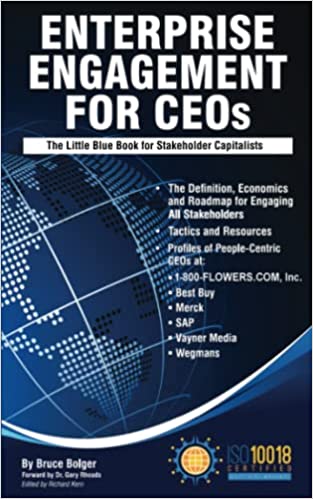

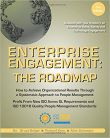


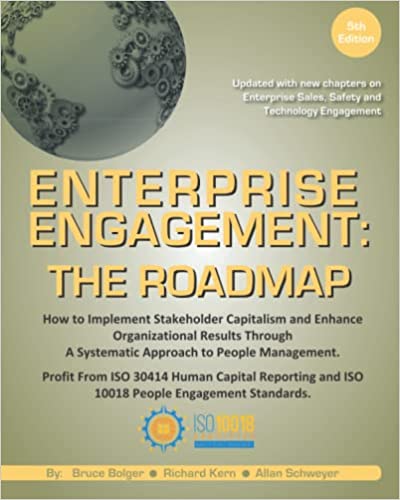
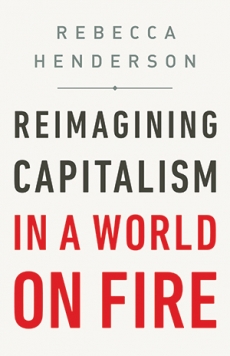
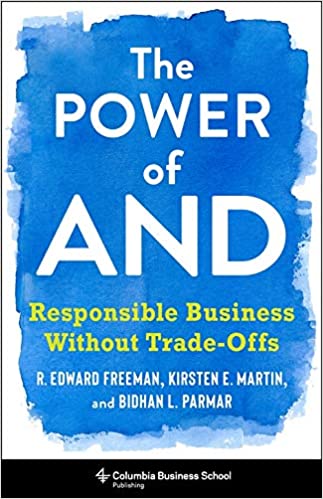 The Power of AND: Responsible Business Without Trade-Offs
The Power of AND: Responsible Business Without Trade-Offs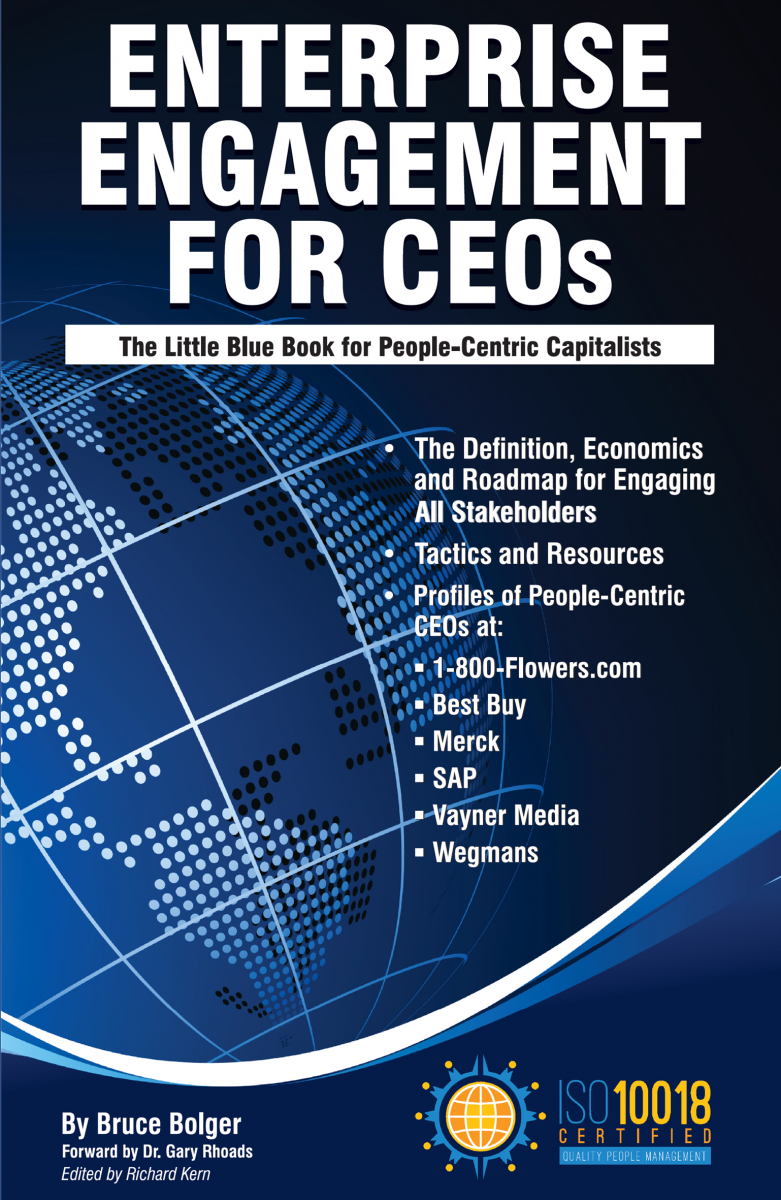
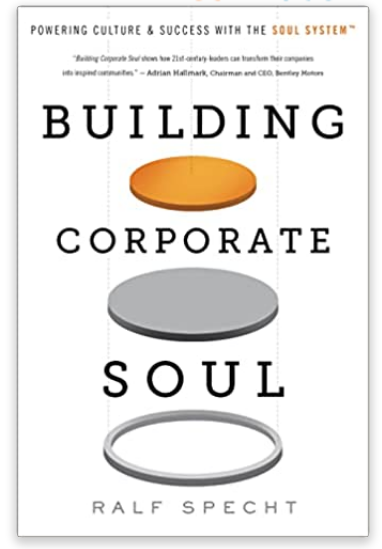

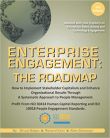
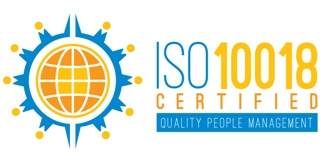 Services:
Services: